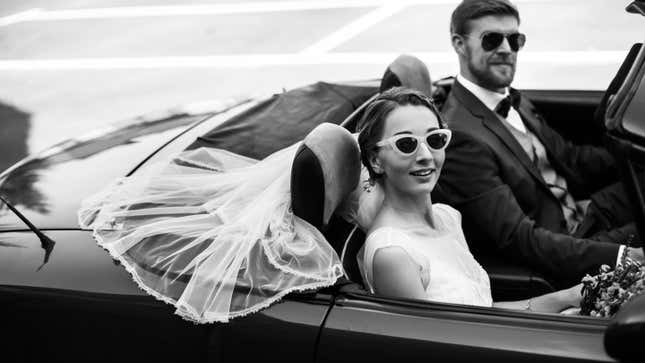There’s Nothing ‘Anti’ About ‘Anti-Bride’
The booming “anti-bride” trend is just the latest attempt by the wedding industry to capitalize on brides' skepticism and anxiety.
In Depth
Photo: Victor Dyomin
Let me set the scene for you. You are at a wedding. The reception and ceremony are taking place in the bride’s backyard, with chairs set up on slate slabs surrounding the house’s cerulean blue pool amidst impeccably gardened hydrangea bushes. There is no bridal party. The bride has opted not to wear a traditional wedding gown with tulle and lace appliqués and the like, but instead an understated, pleated silk slip dress. It still cost, you learn, almost $8,000. Sunglasses, not a veil nor tiara, lay atop her head. On her feet, tasteful cowgirl boots. This is her first of three looks for the evening.
For cocktail hour, oysters on the half shell are served on ice chests and champagne is flowing. Tables are decorated with elegantly long candlesticks and littered with florals and greenery to achieve the look of an overgrown garden party. Dessert will be mini creme brûlées.
How would you describe the event? Alluring? Decadent? Intimate yet lush? What if I told you that the wedding industry, and perhaps even the bride, would use the phrase “anti-bride?”
-

-

-

-

-

-

-

-

-

-

-

-

-

-

-

-

-

-

-

-

-

-

-

-

-

-

-

-

-

-

-

-

-

-

-

-

-

-

-

-








































